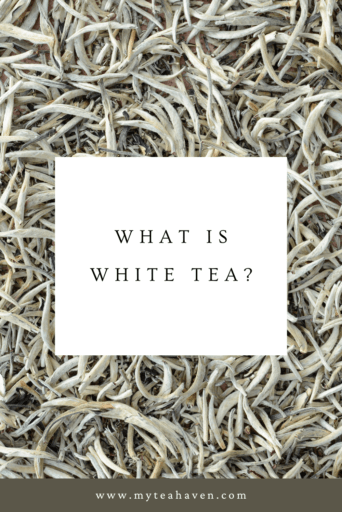What is White Tea? Discovering Nature’s Purest Infusion
White Tea Explored
There are many various types of tea, each with its unique flavors, aromas, and brewing methods. Among them is an intriguing variety called white tea. Today we will learn more about this variety, exploring its definition, production process, and differences from other teas. This tea variety is often considered the most delicate and subtle of all teas, and has gained popularity for its unique characteristics. So, let’s embark on a journey to discover the wonders of this unique tea!
We are a participant in the Amazon Services LLC Associates Program, an affiliate advertising program designed to provide a means for us to earn fees by linking to Amazon.com and related sites. This post may contain affiliate links which means we may receive a commission, at no cost to you, for purchases made using our links. Please see my disclosure to learn more. Unless otherwise stated, all prices are in US$.
What is White Tea?

Definition and Origins
White tea gets its name from the fine silvery hairs found on the unopened buds of the Camellia sinensis plant. It’s made from young tea leaves and buds that are picked before they fully open. This early harvesting allows the leaves to retain a higher concentration of nutrients and antioxidants, giving it its unique characteristics.
Unique Varieties
There are several types of white teas, each with its own distinctive flavors and appearances. The most common varieties include Silver Needle, Bai Mu Dan (White Peony), and Gong Mei.
Silver Needle, also known as Yin Zhen, is made solely from the unopened buds, resulting in a delicate, light-bodied tea with subtle floral notes. Bai Mu Dan combines both buds and young leaves, offering a slightly stronger flavor profile. Gong Mei, made from more mature leaves, has a bolder taste compared to the other two varieties.

VAHDAM Silver Pine Needle Loose Leaf White Tea
This exceptionally fragrant Premium White Tea is made of lightly rolled, long, tender olive green leaves with a velvety texture and whitish hue – thus giving the unique White Leaves with abundant silver tips. Unlike organic white tea, this tea has a warm meadowy aroma and light gold liquor. 100% natural ingredients in this Indian tea!
How is White Tea Produced?
The production process involves careful harvesting, minimal processing, and precise drying methods. Let’s learn more about this interesting process!
Harvesting and Processing
White tea is harvested during the early spring season when the tea plants are covered in young buds. Skilled tea pluckers selectively handpick these buds and leaves, ensuring only the finest ones are chosen. This meticulous process guarantees the quality of white tea.
Once harvested, the leaves and buds are carefully withered under controlled conditions. The withering process removes excess moisture from the leaves without causing oxidation. Unlike other teas, white tea skips the step of rolling or shaping, preserving its delicate structure.
Oxidation and Drying
Following the withering process, the leaves are gently dried to prevent further oxidation. The drying can be done naturally under the sun or using indoor methods such as air drying or baking. This step halts the enzymatic activity and retains the natural flavors and aromas of the tea leaves, creating a subtle and nuanced tea.
Compared to Other Teas
White tea stands out from its counterparts due to its unique characteristics. Let’s compare it with some other popular tea varieties.
Green Tea
Unlike white, green tea undergoes a slight oxidation process after withering. This oxidation gives it a more pronounced flavor and a vibrant green color. Green tea is known for its grassy, vegetal notes and is a popular choice for its various health benefits.
Black Tea
On the other hand, black tea undergoes a complete oxidation process. This leads to a robust, bold flavor and a dark reddish-brown color. Black tea is often enjoyed with milk and sugar and is known for its invigorating properties.
Oolong Tea
Oolong tea falls between green and black tea in terms of oxidation. It is partially oxidized, resulting in a diverse range of flavors and aromas. Oolong tea can be light and floral or dark and rich, depending on the oxidation level.
Brewing Your Tea
To fully enjoy the delicate flavors of white tea, it’s essential to brew it correctly. Here are some key factors to consider when preparing your tea.
Water Temperature and Steeping Time
White tea is best brewed with water heated to around 175°F (80°C). Steeping for 2 to 3 minutes allows the flavors to infuse gently without becoming overpowering. Adjust the steeping time based on personal preference and the specific variety.
Tea-to-Water Ratio
Maintaining the right tea-to-water ratio is crucial for a balanced cup of tea. A general guideline is to use 1 teaspoon of tea leaves per 8 ounces (240 ml) of water. Adjust the amount based on desired strength and personal taste.

Tips for Enjoying White Tea
To make the most of your white tea experience, consider the following tips:

Choosing High-Quality Products
Buy high-quality tea from reputable sources. Look for teas that have been harvested and processed with care, as this ensures the best flavors and aromas in your cup.
Experimenting with Flavors
White tea offers a subtle and delicate taste profile, making it an ideal base for experimentation. Enhance the flavors by adding natural ingredients like dried flowers, citrus peels, or herbs. Get creative and tailor your experience to your preferences!
A Few Final Thoughts
With its minimal processing and delicate flavors, white tea offers a unique experience. Its rich history and distinct characteristics make it a favorite among tea enthusiasts. Whether you prefer the delicate notes of Silver Needle or the bolder flavors of Bai Mu Dan, this variety has something to offer for everyone.
Some Questions You Might Have
- Is white tea caffeinated?
Yes, it does contain caffeine, although the amount is generally lower compared to black or green tea. It’s a good choice for those looking for a milder caffeine boost.
- Does it have any side effects?
It’s generally safe to consume, but it does contain caffeine. Individuals sensitive to caffeine should moderate their intake. Additionally, some people may experience allergic reactions to certain types of tea, so it’s essential to be aware of any personal sensitivities.
- Can I add milk or sweeteners?
White tea is typically enjoyed without milk or sweeteners to appreciate its delicate flavors. That being said, personal preference is key, and you can experiment with additions if desired.
- Can I reuse the leaves for multiple infusions?
Yes, the leaves can be infused multiple times, often providing different flavor profiles with each steeping. Experiment with the number of infusions based on your taste preferences.








Comments are closed.